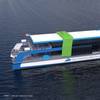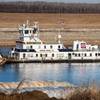Robosys Testing Advanced Navigation Systems on the Solent
Robosys’ latest product, Voyager 100, is aimed at commercial and workboat vessels and is currently going through a vigorous system-verification series of tests to check and verify that the system is avoiding collisions by making safe and COLREGS compliant decisions – autonomously.
For more than a decade, Robosys has been providing Advanced Navigation Systems for manned and unmanned vessels, offering a 24/7 autonomous Situation Awareness capability to keep vessels safe from collision with other vessels or objects. Although COVID-19 has impacted some procedures in the last two years, being able to operate as a manned or unmanned vessel has allowed good progress to be made this year to achieve top performance of the autonomous system.
While initial development work can be made on simulators, the ultimate test of any navigation system is on a vessel at sea. With that in mind, Robosys Automation Ltd opted for the challenging location of the Solent and surroundings as a testing area for their software. It has all the ingredients for thorough testing: busy waterway, weather, a wide variety of vessels from large container ships, through warships to rowing boats.
An important feature of collision avoidance is to make sure the avoiding action doesn’t itself cause another collision danger. There is a set of clear international rules giving guidance on this subject called Collision Regulations at sea (COLREGS) and it is important that these regulations are followed. Voyager navigational software has to follow and obey these regulations. This is just one of many trials that are putting Voyager through its paces to verify that it is compliant with COLREGS. COLREGS even prescribe action to be taken if the other vessel is ignoring the rules.
This and many other features are included in the algorithms running the Voyager software and are part of the many testing scenarios the Roborat is trialing in real life in the waters off Portsmouth and Southampton.















